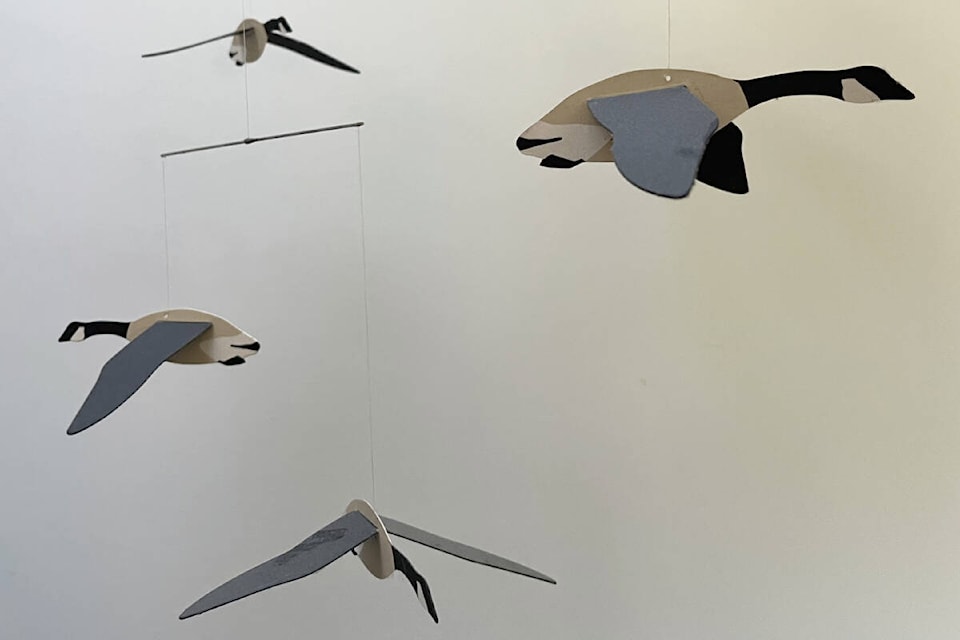by Donna Macdonald
Nelson’s waterfront pathway evokes many memories for me, but few compare to the saga of Rambo Bob. I’m reminded of it dozens of times as I stroll along. The trigger? Numerous flocks of Canada geese lolling about near the airstrip and nibbling on the playing fields, or loudly announcing their arrival from the air or lake.
In the late 1980s, the abundance of geese occupying the fields was matched by cries for the City to do something. Killing them seemed the preferred choice. Predictably, voices were raised in support of our national icon’s right to live. I was an eager new city councillor and I proposed the creation of a Goose Trustee Committee to find non-lethal solutions to this conflict.
My council colleagues rolled their eyes but voted aye, and so I became the first and only Chief Goose Trustee. After a steamy public meeting, I began researching options. I learned about shaking eggs, shooting off cannons, using dog patrols, hanging balloons that resembled predators’ eyes and removing vegetation from the shoreline.
We tried a few of those tricks, with limited success. Killing wasn’t an option because Canada geese are protected migratory birds, except during specified hunting seasons. The other exception is at airports due to the risk to public safety. It’s not good when a flock of geese meets an airplane. The City got a permit to kill geese at the airport and Bob Adams, then director of public works, was our designated shooter. He was frequently seen trying to sneak up on the geese at the airport, shotgun in hand.
Thus, Rambo Bob was born. At first he was successful in his mission, but those darn geese were smart and learned to recognize Rambo’s truck. They’d fly off honking smugly. Even in a different truck Bob’s silver hair was a signal to the geese to make a quick exit.
That year, the goose issue just seemed to vanish. I looked appreciatively at the RCMP’s lovely lawn, which was now home to many of them. But of course, like the cat in the popular children’s song, the geese came back. Over the years, as is their habit, increasing numbers of them have returned to the home nest where they were raised and learned to fly.
We humans certainly bear some responsibility. Canada geese are considered native to southern Ontario and the southern prairie provinces. But they spread their wings as we destroyed their habitats and created better ones: fields of grain, golf courses, parks, lawns.
We’re also warming the climate, making it possible for geese to avoid migrating. Why go anywhere, when everything is at hand? And, unbelievably, in the 1970s to 1990s, Canada geese were intentionally introduced to areas like southern B.C., Quebec and the Maritimes for game hunting purposes I presume. Not a brilliant idea.
Currently, seven million geese are grazing their way through life in North America. Geese have inefficient digestive systems – a lot of nibbled grass has to go in and a lot comes out. That creates human problems on both ends. There’s no proof that goose poop is a human health risk. But it is icky and smelly.
The City has achieved a degree of peaceful co-existence by using a sweeper to clean the playing fields. But goose numbers will keep growing without a long-term, regional goose management plan.
After all the poop had settled, Rambo Bob gave the Goose Trustee a gift: a delicate mobile with five Canada goose figures that to this day quietly and gently bob in in my living room, memories drifting from their wing tips.
Donna Macdonald has lived in Nelson since 1972, and is the author of Surviving City Hall, a memoir of her 19 years on Nelson City Council. Her column appears monthly.
